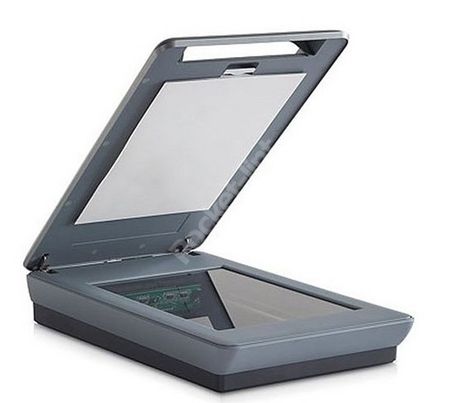Flatbed scanners are increasingly able to do more and more in terms of the bits you can scan on them, and like many flatbeds at the 4890's level, scanning multiple film formats as part of the package is a must have, particularly if you want to archive and/or restore old film shots.
Our quick take
An accomplished, fast and easy to use scanner that has a few annoying idiosyncrasies but is otherwise a scanner worth looking for if you're the type still with boxes of old negs, slides or prints that need archiving.

HP 4890 Scanner - 4.0 / 5
| FOR | AGAINST |
|---|---|
|
|
This flatbed scanner offers a host of neat tools to do just that, from up to A4 reflective/print originals or up to 30 35mm slides or negatives in one swallow. It can also handle up top two 120 format and one 5x4-inch neg or slide as well. Scanning times are pretty fast, although this depends on the resolution you are scanning at, the amount of dust/dirt removal you want to apply (low, medium, high or none) and where the scan is going, say, if you're scanning into another application such as Photoshop or straight to disk.
I found the 4890 easy to set up and get going and getting to my first scan was simple enough, the software all installed on my G5 Mac without a hitch. Four fast scanning buttons are placed across the nicely designed, swooping lid provide one button scanning for emails, copying to a printer, simple one touch scanning and a film scan button. In HP's tests a single 6x4-inch scan the claimed scan speed is 9 seconds, and I can confirm that it is indeed around that sort of level. However, a larger scan (an 88Mb file created at 1200dpi) took just under 3 minutes to complete and appear in my Photoshop CS application.
The TMA (transparency materials adapter) is slotted onto the flatbed for whatever original you're scanning and a protective cover is slipped off of the underside of the scanners lid, which protects the scanning glass that side of the originals, so using the thing is very easy indeed. Scanning text and using the supplied OCR (optical character recognition) software, for a full A4 sheet, took around 42 seconds (HP claims less than 30 seconds). But as with all these speeds, the system in use, operating system and other elements of your system set up can have an impact. Suffice to say, it is still pretty darn fast.
One of the problems with the 4890 is the level of automation, which I feel is unnecessary at this level of the market. It is so auto-minded it actually slows you down as you have to go round "telling" the scanner what you want, not what it thinks you want, and when multiple image scanning it needs to be down for each original. Thankfully these things can be turned off in the scanner's settings and preferences but it is still a tad frustrating having the scanner take over all the time.
One of the auto features that failed to work properly on any of my 35mm scans is the auto crop function, it consistently got landscape and portrait format slides mixed up and failed to crop in tightly enough to the image to stop black borders creeping in from the TMA. Finally, the dust removal software is not up top heavily soiled originals so get things as clean as you can before scanning or be prepared to spend time in another application cleaning off your scans.
To recap
An excellent scanner aimed at the enthusiast with real power and it is certainly fast, but it’s hard to reign in and take control back from the many (admittedly clever) software overrides that are there to help
